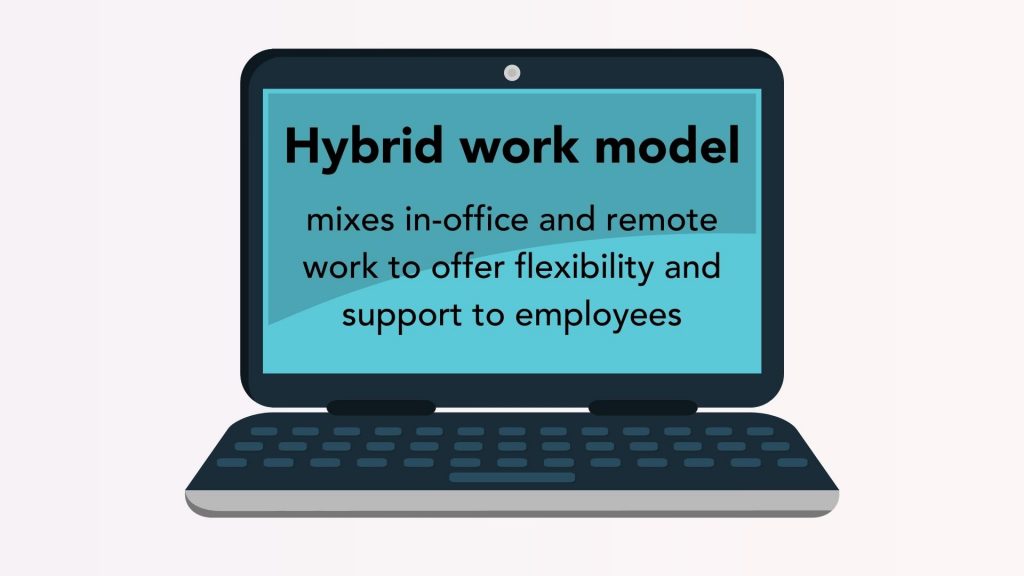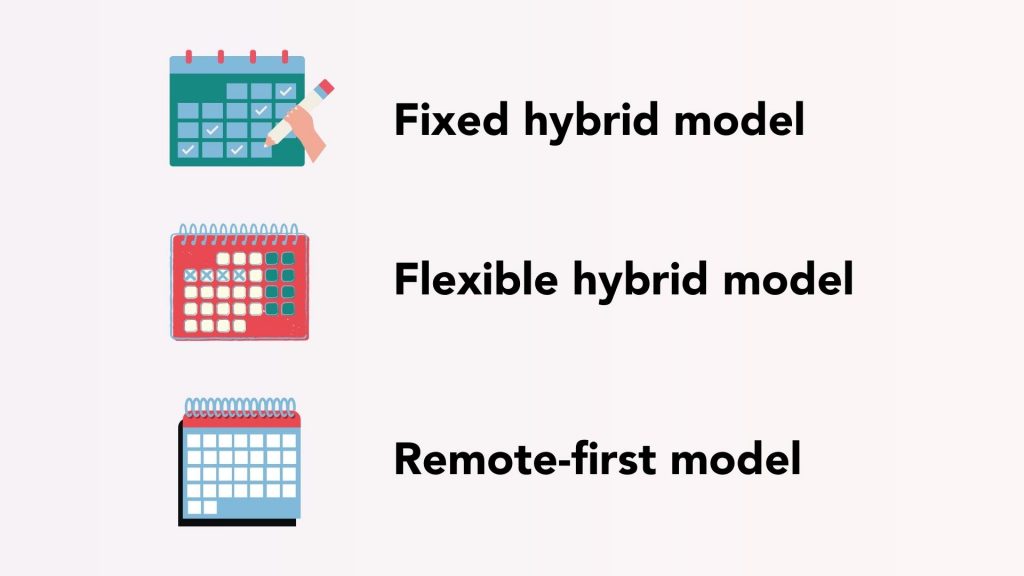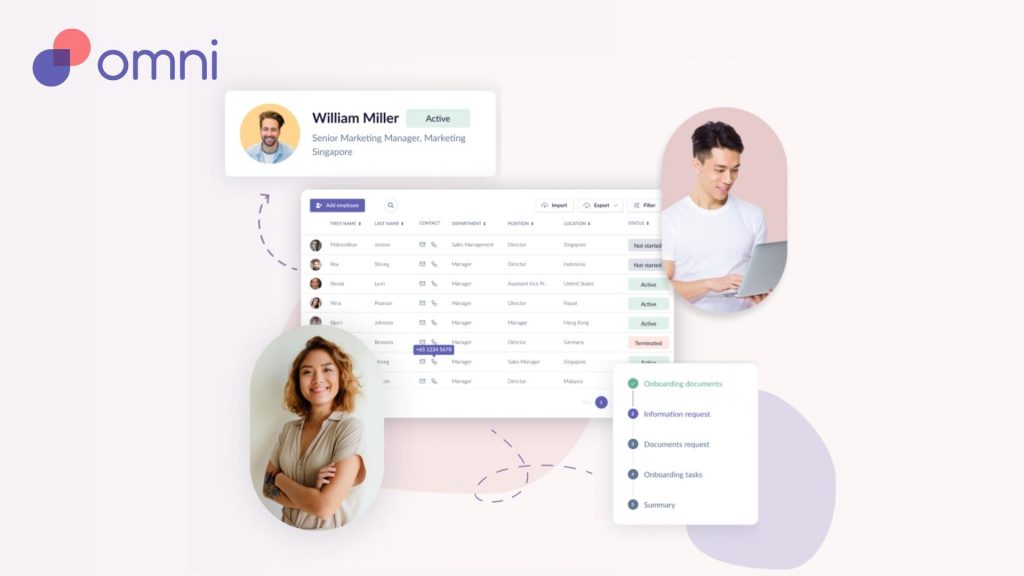Many business leaders want their companies to return to the office full-time, and many workers prefer the flexibility of remote work, causing a power struggle between employees and their employers.
A study by ADP found that if their employer insisted on a full-time return to the office, 64% of employees would consider looking for a new job. Another survey by a global recruiting agency showed that 50% of US workers would rather quit than work in an office full-time. In fact, when the ed-tech startup WhiteHat Jr asked their employees to join the company full-time, 800 of them decided to resign. It’s clear that many people have grown used to remote work during and after the pandemic and don’t want to return to working in the office full-time.
While the flexibility of remote work is a perk for employees, the drawbacks, such as isolation, make a compelling case for a solution that meets both parties in the middle: the hybrid work model.
So what exactly are hybrid work models, and how can they be implemented? Here we will explore various hybrid work model examples and how to put them into action.

The 3 Types of Hybrid Work Model Examples
Hybrid work should be used to best support the unique needs of your company. There are several ways to approach this, with 3 core hybrid work model examples to model from.

1. Fixed hybrid model
In a fixed hybrid work model, employees have a predetermined schedule for when they work in the office and when they work remotely. For example, a company might have a fixed hybrid work model where employees work in the office on Mondays, Wednesdays, and Fridays and remotely on Tuesdays and Thursdays. Such work models suit companies requiring a consistent level of in-person collaboration.
2. Flexible hybrid model
A flexible hybrid work model gives employees the freedom to choose when they work in the office and when they work remotely. They can adjust their schedule based on their needs and preferences. For instance, a company might have a flexible hybrid work model where employees are required to work in-office 3 days a week, but which days they come in is entirely up to the employee.
3. Remote-first hybrid model
In a remote-first hybrid model, employees primarily work remotely and come to the office only when necessary or desired. This model prioritizes remote work and ensures employees have the tools and resources to collaborate from different locations effectively. Your team can work primarily from remote locations and come to the office only when face-to-face collaboration is mandatory.
9 Hybrid Work Model Examples for Inspiration
These hybrid work model examples illustrate how various companies approach hybrid work to best support their initiatives and serve their employees.
1. Apple: fixed hybrid
Apple, renowned for its innovative practices, implemented a fixed hybrid model in August 2022. Employees are required to visit the office three days a week, with Tuesdays and Thursdays designated as set days. Individual teams have the autonomy to decide the third day of working. This approach aligns with Apple’s core focus on hardware, recognizing the value of in-person work for specific tasks.
Apple allows select employees to work remotely for four weeks annually to support further flexibility. As an HR professional, considering customized options within your hybrid model can cater to diverse employee needs and enhance job satisfaction.
2. Hubspot: flexible hybrid
HubSpot believes in providing employees the flexibility to choose their ideal working environment. Whether you prefer the comfort of your home or the collaborative atmosphere of an office, HubSpot has created tailored solutions to accommodate their employee’s needs.
The company also offers a home setup for those working remotely to ensure a productive and comfortable remote work experience. Employees choosing flexible work can visit the office two days per week as per their requirements. We love how Hubspot’s primary goal is maximizing productivity by allowing employees to choose what works best for them.
3. Google: remote-first
Google’s hybrid model allows employees to work three days in the office and two days from their preferred location. Of these hybrid work model examples, what sets Google apart is its global presence, which enables employees to explore the option of relocating to another office if desired. In addition, Google offers the opportunity to apply for complete remote work if a situation demands it. This flexibility led to the formation of fully remote sub-teams within the organization.
Based on their model and options, CEO Sundar Pichai anticipated that around 60% of their employees would work in the office a few days a week. In comparison, 20% would work remotely, and another 20% would change office locations. And to make the remote teams a part of every critical discussion, the company implemented a campfire method. The meetings were hosted in a circular setting with all employees present on their screens.
4. Salesforce: employee-designed hybrid model
As employees designed it, Salesforce has one of the most effective hybrid work model examples. The company conducted an employee well-being survey and found that more than half of employees only wanted to come to the office a few times a week. However, they also discovered that 80% of employees still wanted some connection to a physical workspace.
Based on these findings, Salesforce came up with three ways of working- “flex” (1-3 days in the office per week), fully remote for distant or non-office-dependent roles, and office-based (4-5 days in-person) for essential in-person job functions.
We love how their employees were the architect of this whole hybrid model. And using such strategies helps avoid losing high-profile employees, like Apple did when they made changes without considering their employees’ needs.
5. Amazon: team-led hybrid model
Amazon initially introduced a 3-day workweek policy, giving employees more flexibility. But later, they changed their approach, allowing individual teams to decide when their team members needed to be in the office. This change was made to accommodate each team’s needs and preferences. Therefore, Amazon’s shift to flexibility teaches that instead of imposing a rigid policy, you must consider teams or individuals to have more control over their work arrangements.
6. Meta: fixed hybrid
Meta, the company that owns popular platforms like Facebook and Instagram, has been making headlines for laying off over 10,000 employees. As a part of their restructuring plan, Meta also modified their hybrid plan to give more emphasis to in-person collaboration. Workers must be physically present in the office for three days every week. However, it is only applicable to those who live within traveling distance. This is an excellent example showing that your change in the hybrid policy must require some flexibility to truly accommodate your entire workforce.
7. Spotify: remote-first
Spotify understands that people have different ways of being productive. Some prefer working in an office, while others find cafes with background music more effective. Spotify chose not to impose any restrictions and believes that the freedom to choose where to work increases productivity for their employees. Additionally, Spotify has a well developed remote onboarding process in place. They also ensure that all employees, regardless of location, can access the same learning opportunities by providing online learning activities, whether live or self-led.
8. Shopify: remote-first
Shopify has long embraced a hybrid work model, leveraging the best of both worlds by blending remote and in-office workforces. This approach allowed employees to enjoy the flexibility of working from home while still having the option to collaborate and connect in a physical office space.
However, in the wake of the pandemic, the visionary CEO of Shopify made a significant shift by opting for a fully remote work environment. The newly announced “digital by default” work policy gave complete freedom to employees to work remotely. Also, the employees that prefer an office setup can work from any of the offices available in Canada or Ireland.
9. Dropbox: remote-first
Dropbox first came up with a “virtual-first” approach in 2020 with collaborative spaces and non-linear workdays. The company embraced remote working and in 2021, redesigned its offices to create Dropbox Studios designed for in-person interactions. Instead of individual workstations, the studio is designed for collaboration and core team discussions.
With Dropbox, employees can expect live meetings that align with their time zones and team meetings in their studios as per requirements. As you can see, the company went one step ahead of these hybrid work model examples to implement a flexible work environment that suits the diverse needs of their employees.
Identifying the Right Hybrid Work Model for Your Team

There’s no one size fits all when it comes to hybrid work model examples, even for businesses in the same industry. Some companies thrive with a fully remote setup, while others benefit from more office days.
The nature of work and employee preferences are the two most crucial things to consider when shifting to a hybrid work model. Some of the most successful hybrid work model examples come from companies that conduct surveys to understand what works best for their employees.
To make your task easier, here are some questions you can ask yourself to help determine the right hybrid model to suit your organizational needs:
- What are the job roles and responsibilities within your organization?
Determine which roles can be effectively performed remotely and which require in-person collaboration. Remember that different teams will thrive with different hybrid work models.
- What is the level of experience of employees in your teams?
A PwC survey showed that the respondents with the least professional experience (0-5 years) needed the office to be productive. 30% prefer being remote for no more than one day a week. This shows that the amount of experience can be a crucial factor in selecting your hybrid model.
- What is the current level of employee engagement and satisfaction?
Take an employee survey to identify your employees’ preferences regarding remote work, in-office, and flexible schedules. Create a list of questions keeping in mind the most common employee burnout signs to get a comprehensive view.
- How important is face-to-face interaction for your organization?
Consider the nature of your work and the extent to which tasks require in-person collaboration. Some roles may thrive in a remote-first model, while others may require a more fixed or flexible approach.
- What are the potential costs associated with each hybrid work model?
Assess the financial aspects of implementing different hybrid work models. Consider factors such as office space requirements, equipment needs, and any additional expenses associated with remote or flexible work arrangements.
- What impact will the chosen hybrid work model have on employee well-being?
Consider the potential benefits and challenges of work-life balance, employee stress levels, mental health, and remote workforce management.
Tips for Implementing Hybrid Work Model Examples
Putting time and effort into choosing a suitable hybrid model requires a tactful implementation approach. Here are some areas you must focus on to ensure you do it right:
Identify your goals
Clearly define the objectives you want to achieve within each of the hybrid work model examples. For example, if your goal is to improve employees’ work-life balance, you can implement remote work policies and flexible working hours, and promote using tools that facilitate remote collaboration.
Similarly, if you aim to reduce costs, you can evaluate the need for physical office space and consider implementing hot desking strategies. Therefore, clarity with your goals is crucial to implement a hybrid work model that brings results.
Invest in technology and infrastructure
A successful hybrid work model ensures that employees can access the tools and resources they need to work efficiently, regardless of location. Provide employees with reliable communication and collaboration tools like video conferencing platforms, project management software, and HRIS to fully support your teams.
Encourage open and transparent communication
For any of these hybrid work model examples, effective communication is vital as it helps bridge the physical distance between team members and prevents misunderstandings. For example, in a hybrid work model, a team can use a project management tool to assign tasks, share progress, and discuss challenges. It’s far more effective than communicating back and forth via email.
Embrace asynchronous collaboration
All hybrid work model examples demand asynchronous collaboration to reach their full potential. You must create an environment where employees can collaborate, and share their ideas, as well as enhance remote team communication. Many communication platforms make asynchronous collaboration possible through messaging or leaving comments in live documents to allow employees to collaborate on varying schedules.
Promote team-building activities
Promoting team building and collaboration in all hybrid work model examples helps to strengthen relationships, boost morale, and enhance communication among team members. For instance, a company can organize a virtual team-building event like an online trivia night or a virtual escape room challenge, and create engaging remote onboarding programs to welcome new employees through the community. Such initiatives allow employees to interact in fun and engaging ways, despite being in different physical locations.
Transition to Hybrid Work Seamlessly with Omni
Regardless of which of the hybrid work model examples you’re planning on transitioning to, the change can come with its own set of challenges, such as adapting to new technologies and workflows. Omni addresses these challenges by providing a seamless and intuitive platform that simplifies collaboration and brings ease to your workflows.
With Omni, you can easily manage your work processes in a digital format, eliminating the hassle of dealing with physical paperwork or time consuming administrative tasks. This transition from manual, paper-based workflows to digitized work streams streamlines your operations and reduces administrative burdens. Moreover, automation saves HR’s valuable time and reduces the frequency of human errors.
To learn more about how Omni can simplify your transition to a hybrid work model, book a demo today!



